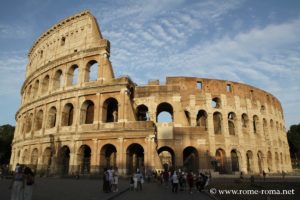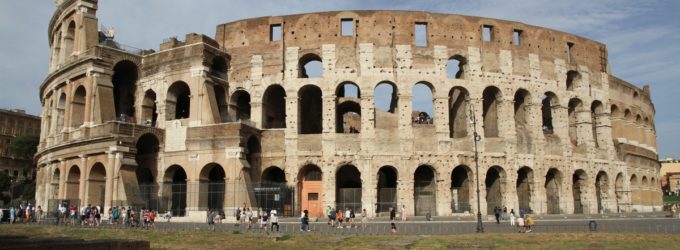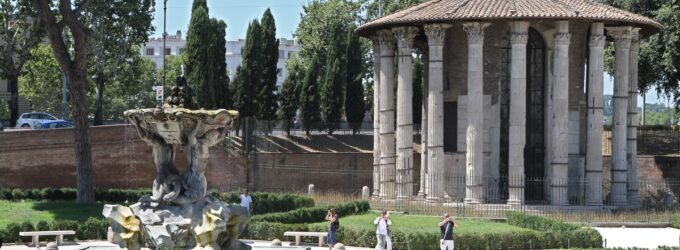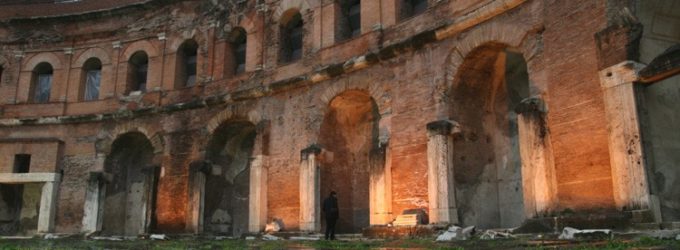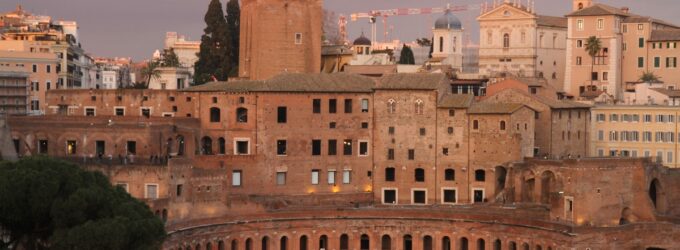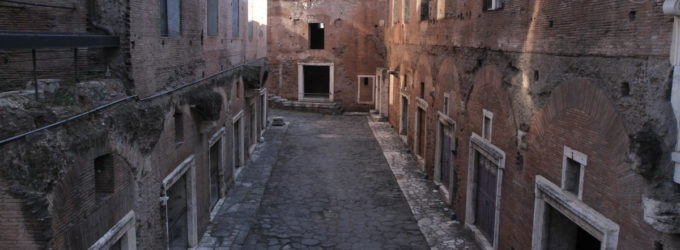The Historic Heart of Rome: The Capitoline Hill and Its Surroundings
The Capitoline Hill
The Capitoline Hill has traditionally been considered the center of Rome. In the city’s earliest days, it formed a fortified area, probably built by the Etruscans. With the development of Ancient Rome, it became home to the most important temples, including the Temple of Jupiter Optimus Maximus, now lost. Today, a monumental staircase leads to the Piazza del Campidoglio, designed during the Renaissance by Michelangelo, and surrounded by the palaces that house the Capitoline Museums.
Santa Maria in Aracoeli and the Vittoriano
On the southern slope, a staircase of 124 white marble steps leads to the church of Santa Maria in Aracoeli, recognizable by its unfinished façade. Behind it rises the neoclassical monument of the Vittoriano (Monument to Victor Emmanuel II), which dominates the southern side of Piazza Venezia, a large square laid out at the beginning of the 20th century.
The Forums, the Palatine Hill and the Colosseum
The Roman Forum, the Palatine Hill and the Colosseum
Southeast of the Capitoline Hill, the plain leading to the Colosseum is occupied by the Roman Forum, the political and social center of the city since the early Republic. Its southern side is dominated by the Palatine Hill, where, according to tradition, Romulus founded Rome and where the imperial residences were later established.
The Imperial Forums
Under the Empire, the forum was extended northward by new political and religious spaces, the Imperial Forums, which precede the Esquiline Hill and the district of the Subura. The largest is the Forum of Trajan, with its markets and the Trajan’s Column. To the east are the Forum of Caesar, the Forum of Augustus, the Forum of Nerva, and the Temple of Peace.
The Forums Holitorium, Boarium and the Circus Maximus
From the Theatre of Marcellus to the Bocca della Verità
South of the Capitoline Hill, toward the Tiber, stands the Theatre of Marcellus, preserved thanks to its transformation into residences and located at the edge of the former Jewish Ghetto. Further on, the remains of the Forum Holitorium are integrated into later buildings. Continuing onward, one reaches the temples of the ancient Forum Boarium, the old river port. Today, the Piazza della Bocca della Verità is surrounded by remarkable monuments and churches.
The Circus Maximus
East of Piazza della Bocca della Verità and south of the Palatine Hill stretches a long valley where the remains of the Circus Maximus are still visible.
Main Monuments
- Colosseum
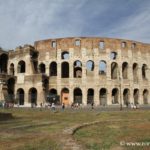 Discovery of the Colosseum, schedules, information and visit of the emblematic ancient ...
Discovery of the Colosseum, schedules, information and visit of the emblematic ancient ... - The Roman Forum of Rome
 The Roman Forum is one of the most fascinating archaeological sites of ...
The Roman Forum is one of the most fascinating archaeological sites of ... - Capitoline Museums
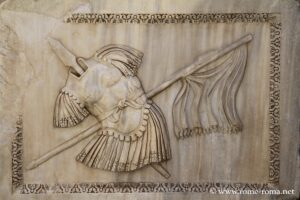 The Capitoline Museums, or *Musei Capitolini* in Italian, are located in the ...
The Capitoline Museums, or *Musei Capitolini* in Italian, are located in the ... - Boarium Forum in Rome
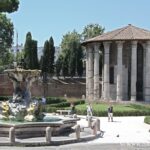 The Forum Boarium, located today on the famous Piazza della Bocca della ...
The Forum Boarium, located today on the famous Piazza della Bocca della ... - Imperial Fora, a monumental ensemble
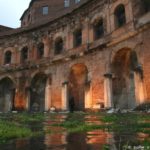 The Imperial Fora, today crossed by the avenue of Via dei Fori ...
The Imperial Fora, today crossed by the avenue of Via dei Fori ... - Trajan’s Forum
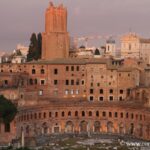 Built at the beginning of the 2nd century by Emperor Trajan and ...
Built at the beginning of the 2nd century by Emperor Trajan and ... - Trajan’s Market Museum
 The very interesting Museum of the Imperial Forums – Trajan’s Markets (Mercati ...
The very interesting Museum of the Imperial Forums – Trajan’s Markets (Mercati ... - Trajan’s Column
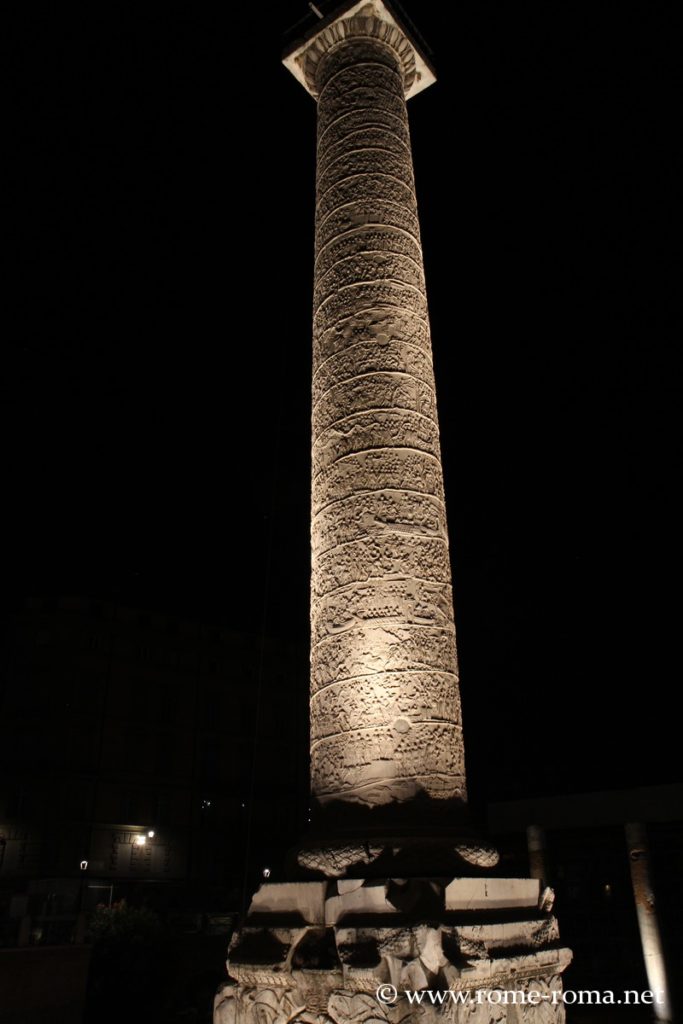 The reliefs of the Trajan’s column in Rome recount the emperor’s military ...
The reliefs of the Trajan’s column in Rome recount the emperor’s military ...
Squares and Places
- Piazza del Campidoglio
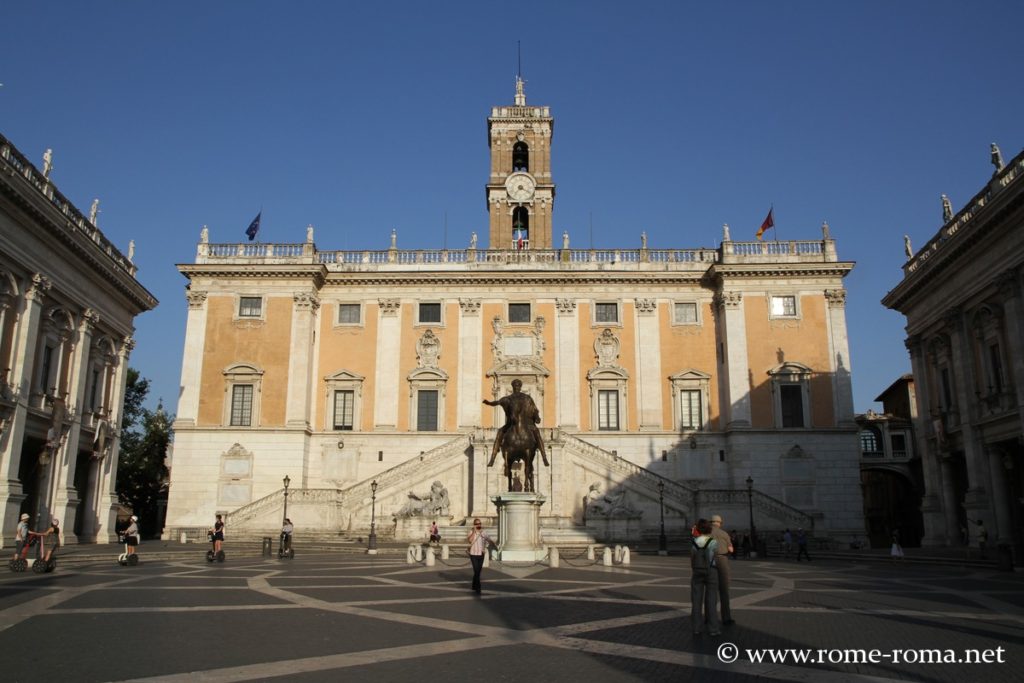 The Capitoline Hill Square, spiritual heart of Rome, rises on the hill ...
The Capitoline Hill Square, spiritual heart of Rome, rises on the hill ... - Piazza della Bocca della Verità in Rome
 The piazza della Bocca della Verità, one of the most picturesque squares ...
The piazza della Bocca della Verità, one of the most picturesque squares ...
Main Religious Buildings
Museums
- Capitoline Museums
 The Capitoline Museums, or *Musei Capitolini* in Italian, are located in the ...
The Capitoline Museums, or *Musei Capitolini* in Italian, are located in the ... - Trajan’s Market Museum
 The very interesting Museum of the Imperial Forums – Trajan’s Markets (Mercati ...
The very interesting Museum of the Imperial Forums – Trajan’s Markets (Mercati ...
More Sites of the Ancient Center
Practical Information / Hotels
- Good hotels near Piazza Venezia sorted BY PRICE within one kilometer of the square
- Good hotels near the Colosseum sorted BY PRICE within one kilometer of the Colosseum
- Good hotels near the Colosseum sorted BY DISTANCE from it
Map of the Sites of the Ancient Center
If you see this after your page is loaded completely, leafletJS files are missing.


